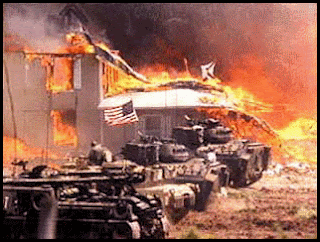 |
| http://carltonblogwork.blogspot.com/2012/11/ethical-issues.html |
Ethics of Disaster Photography in the Age of Social Media (ESMG 4200)
By Ray Huntzinger
Reference:
Hawking, T. (2013, April). Ethics of disaster photography in the age
of social media. Flavorwire. Retrieved on September 13, 2013, from
http://flavorwire.com/385270/the-ethics-of-disaster-photography-in-the-age-of-social-media/
Theme:
The theme of the article was a discussion on whether or not the news
media is acting ethically when they show graphic photographs of
victims during a disaster, especially when social media has no
restraints on ethical depictions.
Summary:
--In the past media outlets were able to decide which photographs were
acceptable and tasteful for public viewing.
--The advent of the internet, phone cameras, and social media outlets
has ensured that nearly any incident of consequence will be documented
by photographs and subsequently distributed on social media outlets.
--Extremely disturbing photographs during 911 prompted discussion on
what sorts of photographs are acceptable for release by media outlets.
--Media professionals disagree on whether or not the media is ethical
when they publish very graphic photographs.
--One line of thinking from media professionals is that the
questionable images will be available through social media outlets
regardless of media interference; therefore, the media may as well
publish photographs to tell the story.
--Other media professionals feel that it is the ethical responsibility
for media outlets to censor photographs to protect the public from
unnecessarily graphic or disturbing images.
--Finally, the article compares opinions on whether the abundance of
graphic photographs available to the public make the public "numb" to
a disaster or create traumatic stressors to the public at large.
Application to the lesson topic:
One component of the lesson topic is the responsibility of the media
to comply with a certain set of journalistic ethics. Whether or not
media outlets are acting ethically when they portray all available
photographs or acting unethically by holding back photographic
information is debated in the article. The article also debates how
these images affect the mental welfare of the public. Both of these
discussions are directly related to how the media interacts with the
public and emergency responders which is a focus of the lesson topic.
Application to emergency services:
The article is directly related to emergency services because it
emphasizes the importance of social media in our society, especially
in terms of disaster photography. The speed and level at which social
media distributes information and photographs can directly affect how
the public perceives emergency services during disaster response; in
other words, photographs can either make emergency services look
effective or appear to be inept.
